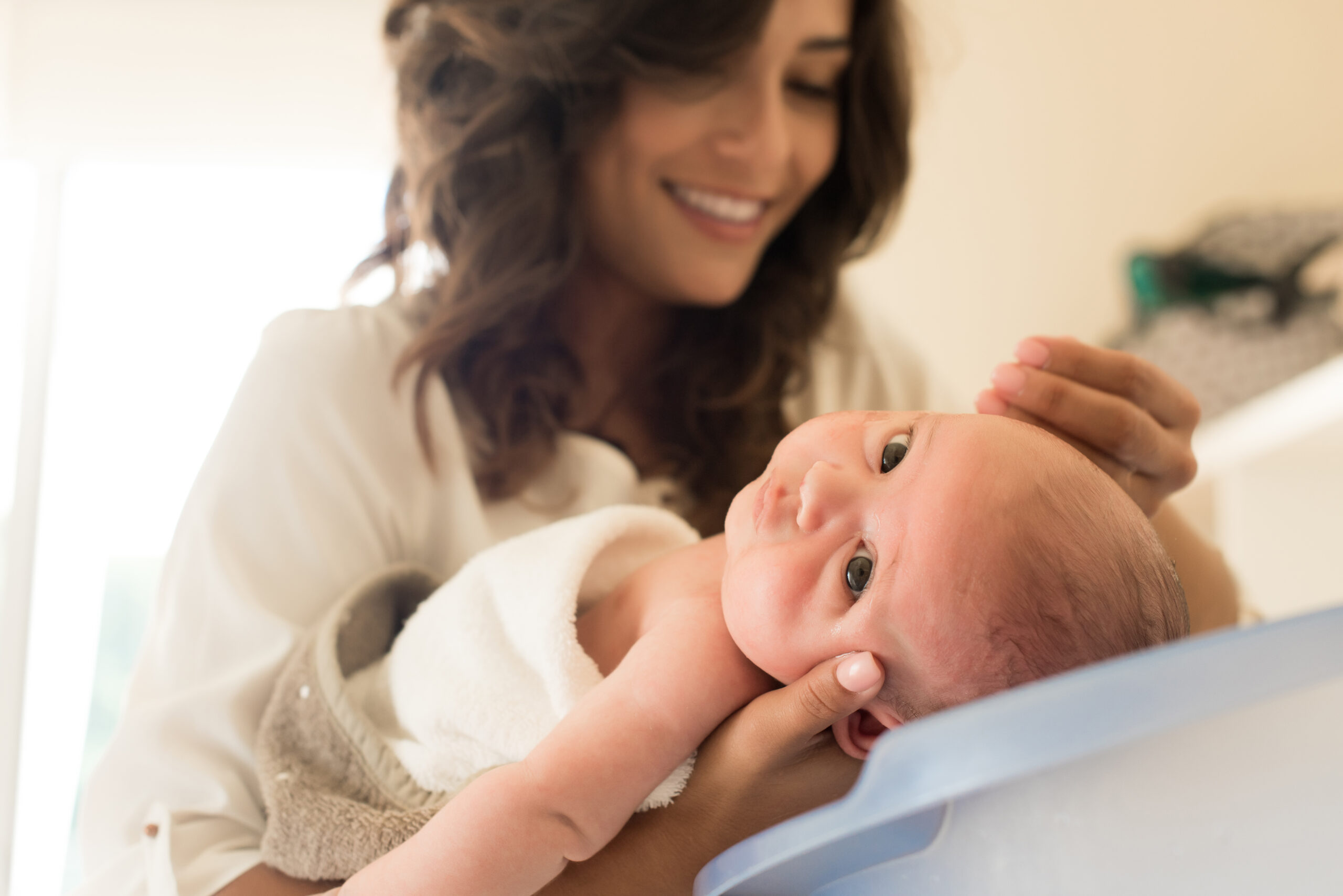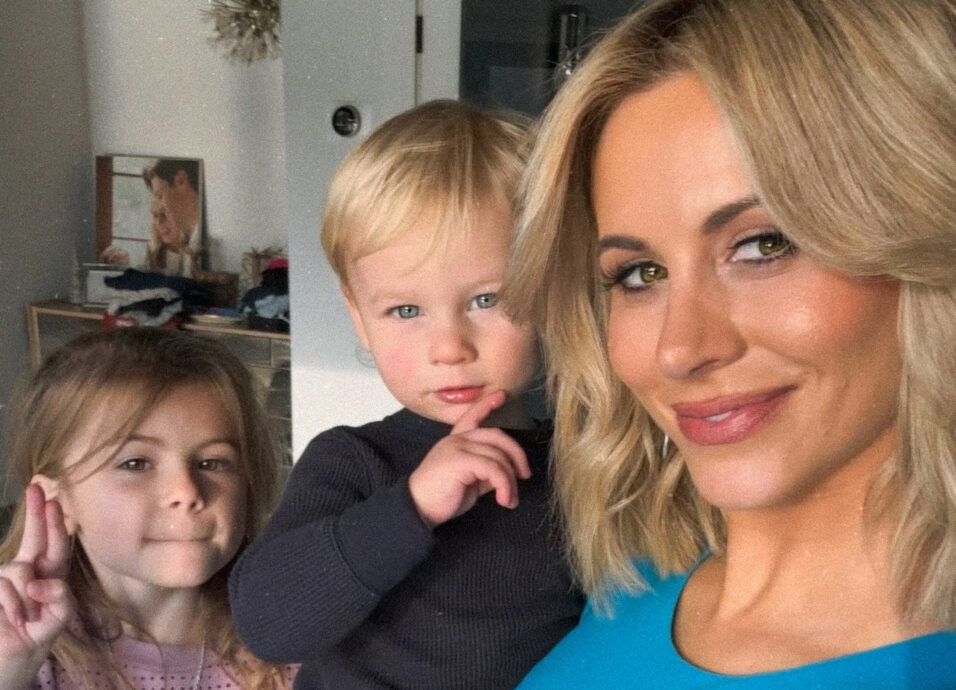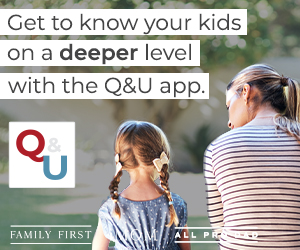Are you unsure about bathing your newborn? If you’re a first-time mom, you may have fears that your baby is too fragile to bathe. Maybe you don’t want to risk dropping him as he squirms in the water. Or maybe you’re unsure of the proper bathwater temperature or what type of soap to use. But with a little practice and these basic tips, you will find that bathing your baby becomes an easy, routine part of your care.
Don’t worry if your baby cries the first few times. It may take awhile for him to adjust to the experience. Singing or talking in a soothing voice may help relieve his anxiety. If he suddenly starts crying, make sure that the water is the right temperature and there is no soap in his eyes.
Bathtime Basics
If you have just brought your baby home from the hospital or still don’t feel confident enough to give a tub bath, then begin with sponge baths. Once the umbilical cord falls off and the area has healed and a baby boy’s circumcision has healed, you can begin giving your baby tub baths. Follow all instructions from your physician about proper cord care and post-circumcision care.
You may first wonder how often you will need to bathe your newborn. Typically, you will not have to bathe your newborn every day, and in fact bathing him this often will dry out his skin. You’ll find that just two or three times a week will be sufficient. Basic care during diaper changing and after feeding will help keep him clean between baths.
When you bathe your baby, you may not necessarily need to wash his hair. But if you notice scaly places on his scalp (cradle cap) or his hair seems dirty, then you can wash it. Use a hooded towel to keep your baby warm while drying. Never use a hair dryer on high heat, which could burn your baby’s sensitive scalp.
The Right Supplies
As you begin shopping for baby bathtubs, you will soon realize the options are numerous. Many moms start with a plastic tub designed for newborns. Or you may prefer special tubs that fit inside your own bathtub. You might also want to purchase a baby bath thermometer, which has the safe temperature ranges marked on it.
There is no need to buy fancy soaps for your baby. Typically water is all you will need, but if soap is necessary, buy a mild, unscented soap with moisturizer. Don’t use scented soaps or bubble baths, which may irritate your newborn’s sensitive skin. You also will not need to use lotions after your newborn’s bath. In fact, the Mayo Clinic advises against greasy lotions or ointments because they may create rashes by blocking your baby’s sweat glands. Newborns also do not need powders, unless directed by your physician.
Preparing the Bath
You won’t need much water in the tub to bathe your baby. Just a few inches should do it. As you are getting used to bathing your baby, you can just lather her on a towel, then use the tub for rinsing. Use warm water (between 90 and 100 degrees F), which you can check by touch or with a bath thermometer. To prevent your baby from getting too cold, make sure the room temperature is warm enough (about 75 F).
Sponge Bath Techniques
First, lay your baby on a towel or pad. Keep one hand on your baby at all times, and never leave him unattended. Use a damp washcloth to wipe his face. For his sensitive skin around the eyes, use a damp cotton ball to wipe from the inside to outside of the eyelid. In order to avoid your baby getting chilled, keep him covered with a towel during the sponge bath, exposing only the body part that is being washed. Unless your baby is really dirty, a damp washcloth (without soap) will be sufficient for the rest of his body. Avoid getting the umbilical cord wet.
Bathing Techniques
Make sure your baby is fully supported and secure at all times. If you need to step away to reach for something, always make sure to take your baby with you. Try to place everything you might possibly need in arms’ reach before beginning the bath.
The Mayo Clinic suggests the following system: “Support your baby’s head and torso with your arm and hand. Wrap your arm under your baby’s back, grasping your baby firmly under the armpit. When you clean your baby’s back and buttocks, lean him or her forward on your arm. Continue to grasp your baby under the armpit. To rinse your baby’s hair, try a football hold under the faucet. Support your baby’s back with your arm, keeping a firm hold on the head while you rinse.”
Begin by washing your baby’s face and body. If you need to wash his hair, save that for last so he doesn’t lose too much body heat. When cleaning his ears, use a washcloth, not a cotton swab, which could easily damage his ear drum.
Make sure you thoroughly dry your baby, particularly in skin folds, in order to prevent rashes.
Although the task may seem daunting at first, you will find that bathing your baby can be an enjoyable experience for the both of you.
Sources:
Medical information within this site is not intended for use in the diagnosis or treatment of any health condition. Please consult a licensed health care professional for the treatment or diagnosis of any medical condition.








